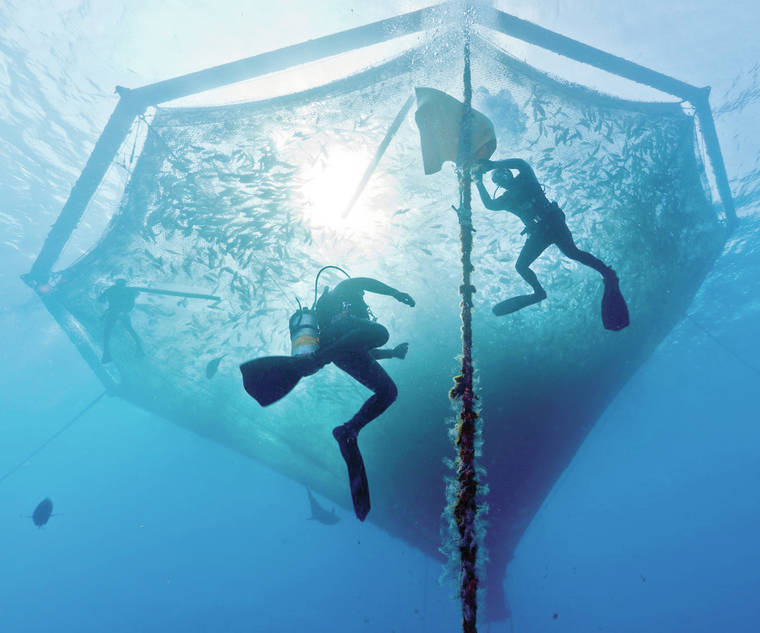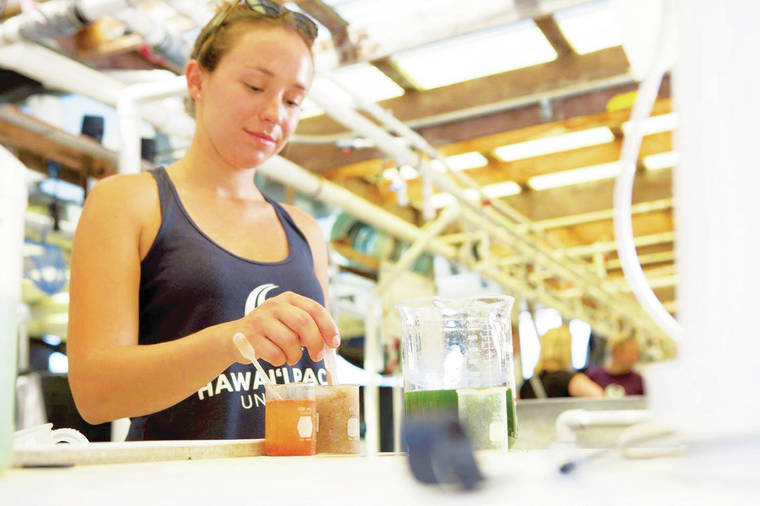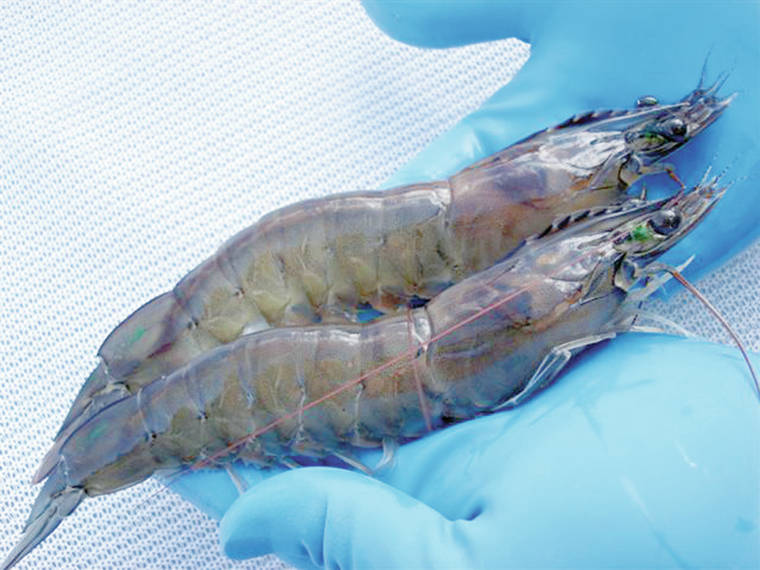HONOLULU — Aquaculture experts from around the nation converged in Honolulu Friday to explore Hawai‘i’s roots in marine aquaculture and contributions to the industry, which is projected to continue worldwide growth.
Hosted by the National Oceanic and Atmospheric Administration, the Oceanic Institute of Hawai‘i Pacific University, Hawai‘i Sea Grant and Kualoa Ranch, attendees listened to panelists, toured fishponds and tasted fresh oysters.
Jennie Lyons of NOAA said the agency is excited about Hawai‘i’s seafood farms, and pointed out the potential for the state to use ocean aquaculture to add to local food production.
“Ocean aquaculture has come a long way in the past three decades, and 30 years of lessons learned have been put into practice,” Lyons said. “We know how to do it right. We can produce a locally grown, sustainable product. And science continues to improve the possibilities in the offshore environment.”
According to NOAA, Hawai‘i already hosts most of the aquaculture industry in the Pacific Islands Region, which spans from Hawai‘i and American Samoa in the central Pacific to the Northern Marianas Islands and Guam in the Western Pacific. The region produces a wide variety of crustaceans, finfish, mollusks and algae for consumption.
Hawai‘i has been a test bed for cutting-edge research and development on new aquaculture gear and technology, including open-ocean finfish aquaculture. In 1999, with assistance from the NOAA Sea Grant Program, Hawai‘i became the first place in the world with a commercially operating, ocean lease, offshore, cage-aquaculture system: Blue Ocean Mariculture off of Hawai‘i Island.
Their open-ocean marine finfish farm, the only one in operation in the U.S, produced 900,000 pounds of Hawaiian kanpachi in 2017.
Currently, efforts are underway to establish a regional permitting process to manage the development of an environmentally sound and economically sustainable fishery.
Using fishponds in this overall strategy to increase aquaculture in Hawai‘i are high on the priority list, since Hawaiian fishponds have been used for more than 1,000 years as a source of food.
Through a 2017 grant provided by the NOAA Fisheries Pacific Islands Regional Office, the Oceanic Institute is helping fishpond managers acquire the aquaculture knowledge necessary to increase fishpond production so that they may one day produce more food for local communities, support local livelihoods, and create revenue streams to support educational and cultural programs.
Out at Kualoa Ranch, Lyons said science is improving disease reduction and improving feed sustainability, and even how experts map the perfect location for a seafood farm.
“The world needs more food. We have a growing population. Wild fisheries in the United States are the gold standard. But wild fish are already caught to sustainable levels here. We need to grow more protein to feed people,” Lyons said.
She pointed out another win for pumping up aquaculture in Hawai‘i: improving the economy.
“Expanding locally grown seafood will create jobs, improve Hawai‘i’s economic and food security, and provide new international trade opportunities,” Lyons said. “There is so much untapped potential, and I am passionate about telling people that farmed seafood is good for them, personally. It’s good for communities. And it’s good for the planet.”
•••
Jessica Else, editor-in-chief, can be reached at 245-0457 or jelse@thegardenisland.com.






